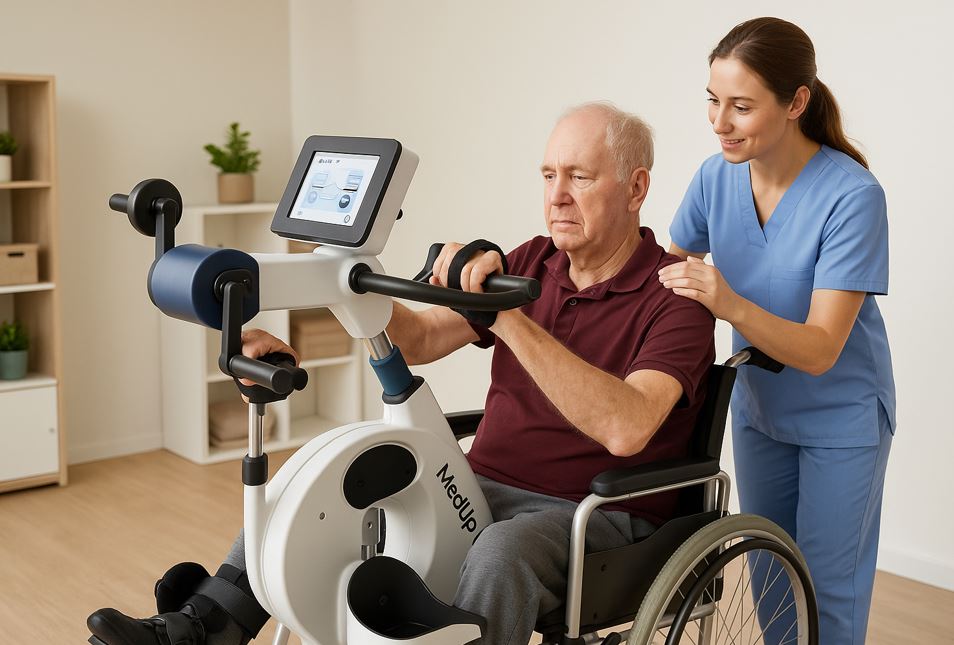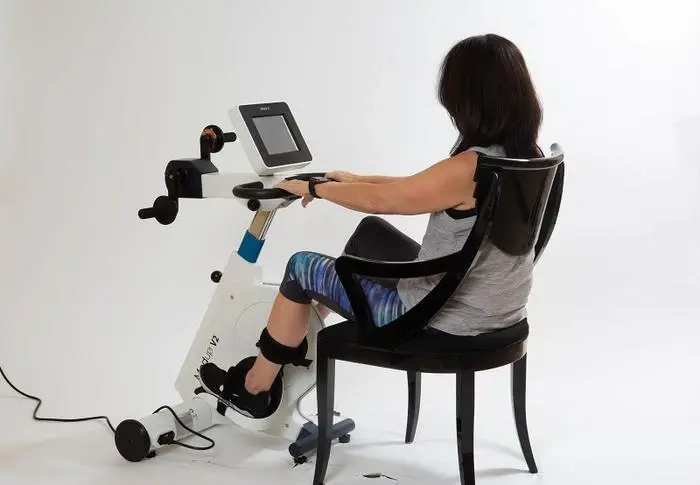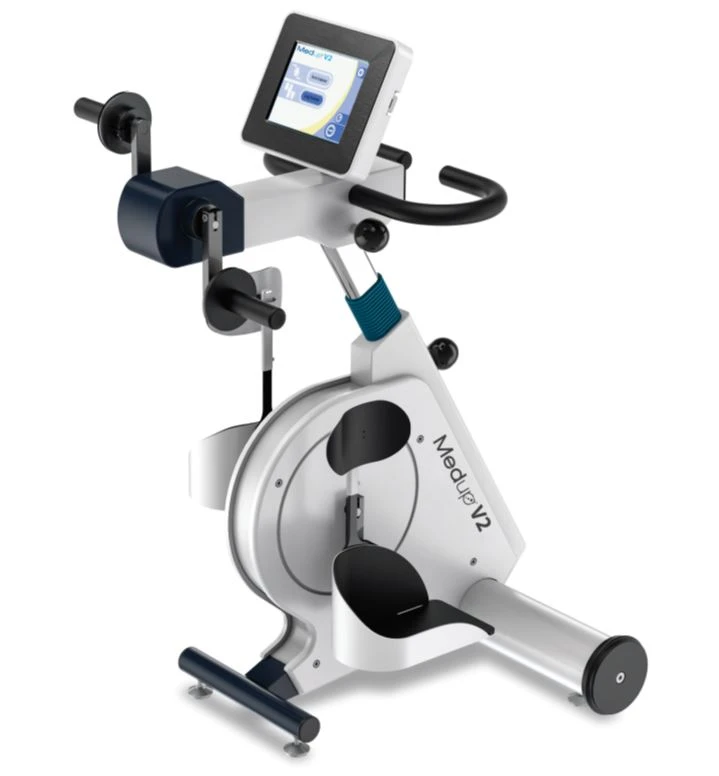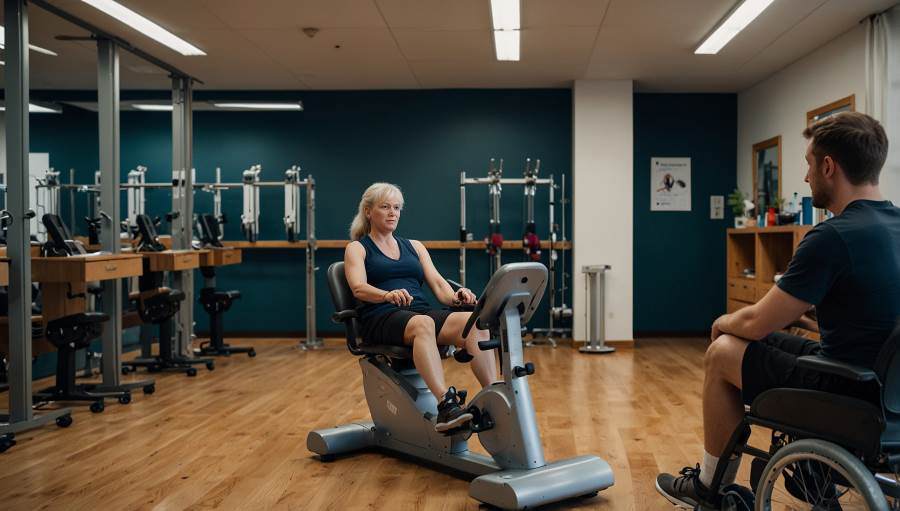Stroke recovery is never a one-size-fits-all journey. For many survivors, regaining mobility, balance, and confidence is a process that can take months—or years. While traditional physiotherapy remains vital, a growing number of clinics, rehab centers, and families are turning to an often overlooked tool that brings movement back in a safe and consistent way: passive cycling.
This approach is gaining momentum in neurorehabilitation circles—and for good reason. Passive cycling isn’t just exercise. It’s an opportunity to reconnect the brain and body.
MedUp Bike V2 helps stroke survivors and seniors regain strength, mobility, and hope—right from their home or care facility. See how our motor-assisted cycle trainer works to support stroke rehab and improve daily quality of life.
What Is Passive Cycling?
Unlike traditional cycling, passive cycling uses a motor to move the pedals. Think of it as assisted cycling. Users don’t need to initiate movement themselves—instead, their legs are guided through a smooth pedaling motion while seated.
This means even people with limited mobility, hemiparesis (partial weakness on one side of the body), or early-stage recovery after stroke can participate in a motion-based activity that mimics real-world movement—without exerting active force.
Advanced passive cycle trainers can also switch between passive, active-assist, and fully active modes. That adaptability is key in rehabilitation settings.
Why Stroke Survivors Benefit
Stroke can severely impact muscle tone, coordination, and the brain’s ability to communicate with muscles. Passive cycling addresses all three by:
- Reducing spasticity and stiffness in the limbs
- Encouraging rhythmic movement, which supports neuroplasticity
- Stimulating circulation and improving cardiovascular health
- Providing gentle movement without triggering fatigue or overexertion
According to a studies, passive cycling helped improve gait performance and balance in post-stroke patients when added to conventional therapy routines.
Movement = Brain Activity
Even though the user isn’t actively pedaling during passive cycling, the nervous system is still engaged. Repetitive, symmetrical motion helps the brain relearn patterns—an important principle in neuroplasticity, which is the brain’s ability to form new neural connections.
This is especially useful in the early phases of stroke recovery, when patients may not yet have the strength to engage in traditional strength training or gait exercises.
A Safe Starting Point
Because passive cycling is low-impact and adjustable, it’s often used as a gateway activity. Many physiotherapists use it at the beginning of a session to warm up the muscles, reduce spasticity, and increase range of motion before more targeted therapy begins.
Even at home, patients can use it daily—without supervision—once they’re cleared by a therapist or physician. The ability to remain consistent is a game-changer in rehab outcomes.
Physical and Psychological Benefits
In addition to muscle tone and mobility, users often report:
- Improved mood and motivation
- Reduced joint pain or tightness
- Better circulation and reduced swelling
- A greater sense of independence and accomplishment
For stroke survivors, whose daily lives may feel limited, having a tool that facilitates motion and progress can be incredibly empowering.
Who Else Can Benefit?
While stroke survivors are a primary user group, passive cycling also supports:
- People with Parkinson’s disease
- Seniors in long-term care or at risk of falls
- Those recovering from hip or knee replacement
- Individuals with multiple sclerosis, cerebral palsy, or muscle-wasting conditions
In all these cases, gentle movement promotes circulation, maintains joint mobility, and helps reduce physical decline from inactivity.
The Future of Stroke Rehab Is Portable, Consistent, and Gentle
Passive cycling isn’t a magic bullet—but it is a powerful supplement to traditional rehab that can enhance recovery and boost long-term quality of life. Whether in a hospital, therapy clinic, or home setting, motion matters. And thanks to accessible devices like the MedUp Bike V2, that motion is easier to achieve than ever.






